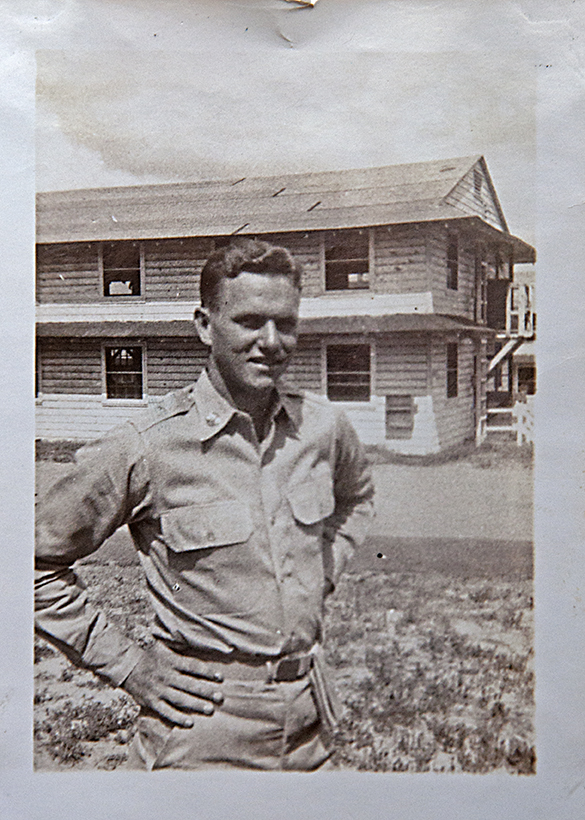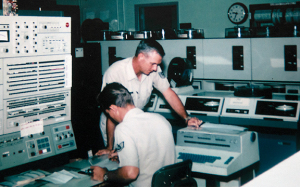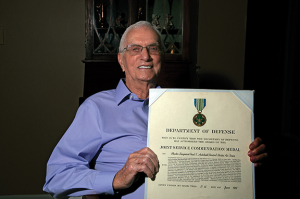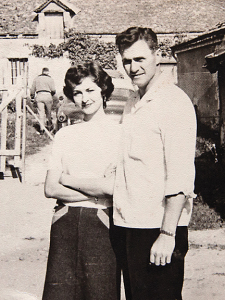Veteran Salute: Paul Hatchett
Posted on November 1, 2014 by bob in Features
by Jake Roberts; photos by Bob Corley (and contributed by Paul Hatchett)
Retired Air Force Master Sergeant Paul Hatchett doesn’t look like a “computer geek.” Now in his eighth decade, sporting a warm smile and firm handshake, he was born in Birmingham long before the world ran on computers, and spent 22 of his 80-plus years in uniform with extended time in both the Army and Air Force. His participation in what would become the greatest scientific innovation of the 20th Century began in 1947.
“I always liked the Navy, and thought I was going to join. But I didn’t like the recruiter,” he said with a smile. “So I went down the street to the Army recruiter and joined the Army.”
After basic training Hatchett selected a speciality that would, over time, place him on the cutting edge of computer applications for military logistics and planning. What drew him to the field isn’t clear. At that time very few people had even seen a computer. The dominant player was IBM, with revolutionary work in calculations, data storage and retrieval, all done with punch cards – small, thin pieces of cardboard with holes.
Hatchett’s Army career choice was operating a punch card machine as a ‘tabulator operator.’ He stayed in the Army for a decade, including time in Japan during the Korean War, leaving the Army in 1957. But his civilian time was short-lived.
“I was out maybe five days,” he recalls, “when I enlisted in the Air Force.”
Over the next 12 years Hatchett advanced through the ranks. Computers were more sophisticated and complicated, but additional training and study resulted in him being put in charge of a facility in Hawaii as the NCOIC — Non-Commissioned Officer In Charge — responsible for data processing for Air Force logistics supporting the Vietnam War.
“It was so secret,” he said, “even the Marines on base couldn’t come into the facility.”
His service in Hawaii from October 1966 to June 1969 earned him a Joint Service Commendation medal for displaying “…outstanding initiative far beyond that normally expected of his position.”
“In maintaining his own expertise in the fast developing data processing field,” the commendation reads, “he continually pursued formal studies to maintain a high level of knowledge which enabled him to act as a constant source of information for his men in all of the many intricate operations of the computer systems.”
The commendation is signed by John S. McCain, Jr., Admiral, USN, father of Senator John McCain.
Among Hatchett’s fondest service memories is the extensive travel he and his family enjoyed — France, Okinawa, Japan, Hawaii, Germany and more. Such travel gave him a different perspective about life in the U.S.
“I could drive all the way across Germany, into Austria and back into Germany, and not fill up a candy sack with trash along the road,” he said. “I can drive two blocks here in Montgomery, or Birmingham or anywhere, and fill up a big bag with trash. I want people to appreciate what we have here, to respect it, to be proud of where we live.”
Following his retirement from the Air Force in 1969, Hatchett worked for a bank in Birmingham and a school system in Florida. He how resides at CaraVita Village in Montgomery.
Though Hatchett admits today’s small, sophisticated computers are a mystery, given the work he did as the computer era was coming of age, it’s not difficult to envision him back in the thick of it with just a little training.













